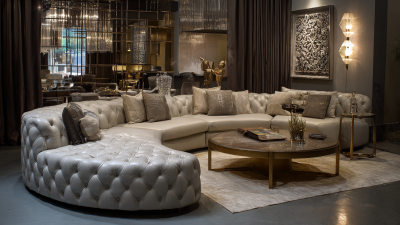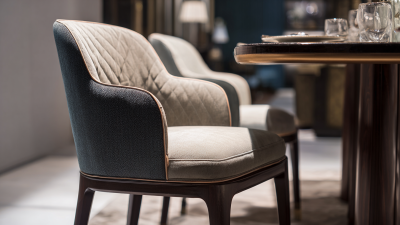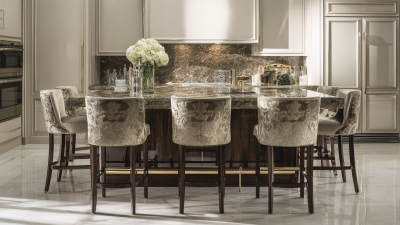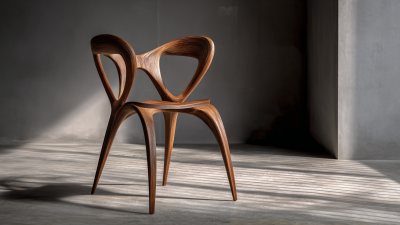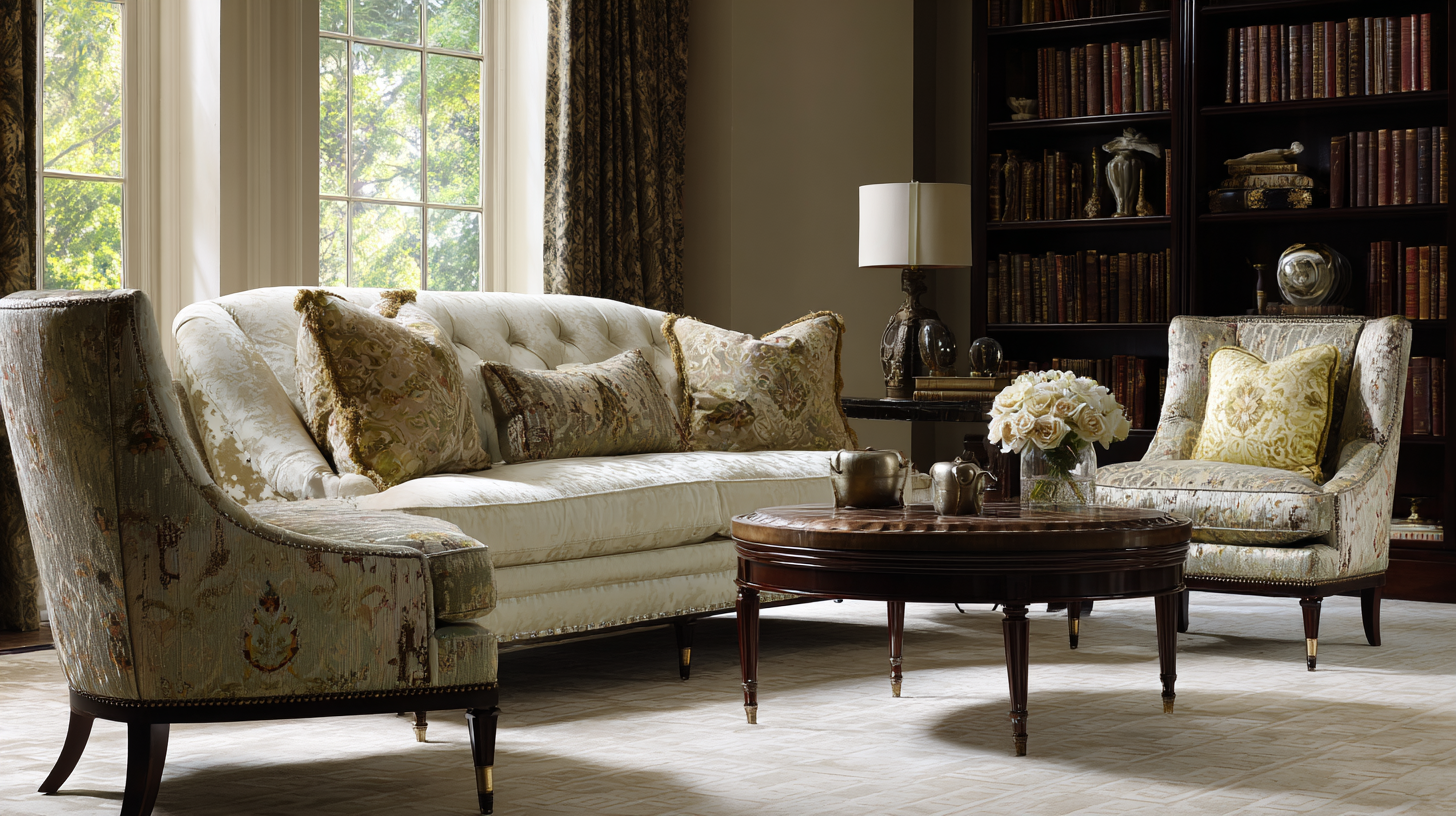 In today's fast-paced world, the aesthetic and functional appeal of upholstered furniture has garnered significant attention, especially in modern living spaces. According to a recent report by the Furniture Today, the upholstered furniture segment is expected to grow at a steady rate of 5% annually, reflecting consumers' increasing preference for style and comfort. This trend is underscored by a survey from the American Home Furnishings Alliance, which indicates that 70% of homeowners prioritize comfort and durability when selecting furniture. Upholstered furniture not only enhances the visual appeal of a room but also offers a multitude of benefits, such as sound insulation, thermal comfort, and customizable design options. As urban living spaces become more compact, the versatility and warmth associated with upholstered pieces make them a strategic choice for creating inviting environments that cater to both relaxation and socialization.
In today's fast-paced world, the aesthetic and functional appeal of upholstered furniture has garnered significant attention, especially in modern living spaces. According to a recent report by the Furniture Today, the upholstered furniture segment is expected to grow at a steady rate of 5% annually, reflecting consumers' increasing preference for style and comfort. This trend is underscored by a survey from the American Home Furnishings Alliance, which indicates that 70% of homeowners prioritize comfort and durability when selecting furniture. Upholstered furniture not only enhances the visual appeal of a room but also offers a multitude of benefits, such as sound insulation, thermal comfort, and customizable design options. As urban living spaces become more compact, the versatility and warmth associated with upholstered pieces make them a strategic choice for creating inviting environments that cater to both relaxation and socialization.
Upholstered furniture has become a staple in modern living spaces, combining comfort with aesthetic appeal. One of the key characteristics of upholstered furniture is its soft, padded surfaces, which are typically created using a variety of materials that enhance both comfort and style. Commonly used materials include foam, fiberfill, and natural fibers that provide the necessary support for a relaxing experience. The choice of fabric, ranging from leather to cotton blends, further influences the look and feel of the piece, allowing homeowners to express their unique style preferences.
The frame construction of upholstered furniture is another crucial aspect to consider. Sturdy materials like hardwood or metal are often used to provide durability and stability, ensuring that the furniture can withstand everyday use. Additionally, upholstery techniques such as tufting or pleating not only enhance visual interest but also contribute to the longevity of the furniture. With various options available, including customizable designs, upholstered furniture can adapt to the evolving needs and tastes of modern interiors, making it a versatile choice for any living space.
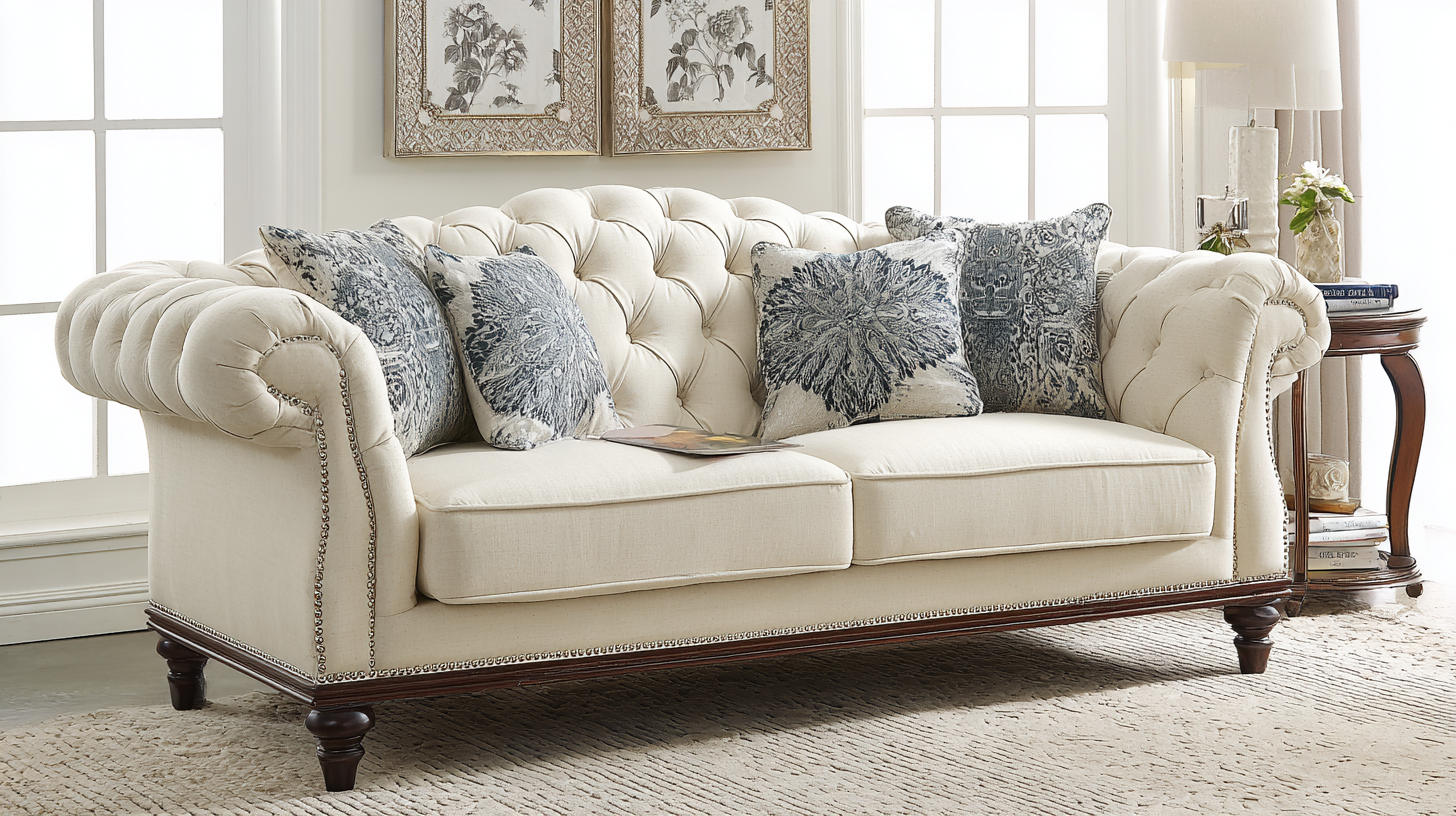
Upholstered furniture offers significant health benefits, making it an excellent choice for modern living spaces. One of the primary advantages is its ability to reduce allergens. According to a report from the Asthma and Allergy Foundation of America, fabric surfaces, such as those found in upholstered chairs and sofas, can trap dust, pet dander, and pollen, preventing these allergens from becoming airborne. Regular cleaning and maintenance can significantly minimize allergen accumulation, creating a healthier indoor environment.
Additionally, upholstered furniture enhances comfort, which can positively impact mental and physical well-being. The American Psychological Association highlights that comfort in living spaces contributes to reduced stress levels and improved overall mood. Studies indicate that individuals who invest in comfortable furniture are more likely to spend quality time at home, fostering social interactions and relaxation. Opting for upholstered pieces with high-quality materials not only promotes a cozy atmosphere but also encourages a healthier lifestyle by enabling restful leisure and social engagements in one’s living space.
| Benefit | Description | Impact on Health |
|---|---|---|
| Reduces Allergens | Upholstered furniture can trap dust, pet dander, and other allergens, preventing them from circulating in the air. | Helps alleviate allergy symptoms and promotes easier breathing. |
| Enhances Comfort | The soft surfaces of upholstered furniture provide additional comfort for sitting or lounging. | Provides better support and reduces pressure points, contributing to improved overall well-being. |
| Improves Aesthetics | Available in various fabrics, colors, and patterns, enhancing the visual appeal of living spaces. | A pleasing environment can positively affect mood and mental health. |
| Sound Absorption | Upholstered furniture helps dampen sound, making spaces quieter. | Reduced noise pollution can enhance relaxation and concentration. |
Upholstered furniture stands out as a versatile choice for modern living spaces, seamlessly integrating into various décor styles. Whether your home boasts a minimalist aesthetic or leans towards rustic charm, upholstered pieces provide an array of textures and colors that can enhance the overall design. For instance, a sleek, low-profile sofa in neutral upholstery can complement a contemporary theme, while bold patterns and rich fabrics can infuse a traditional or eclectic space with personality.
Moreover, the adaptability of upholstered furniture extends beyond color and texture. Pieces such as ottomans, chairs, and loveseats can serve dual purposes, acting as both functional seating and decorative elements that accentuate a room’s theme. In a mid-century modern setup, a classic tufted armchair can become a focal point, while in an industrial loft, a leather couch can add warmth against exposed brick walls. This design versatility ensures that upholstered furniture continues to be a timeless investment for transforming living spaces into harmonious and stylish environments.
When considering upholstered furniture for modern living spaces, durability and maintenance are crucial factors that can significantly impact both the lifespan of the pieces and the overall aesthetics of a home. According to a report by Furniture Today, high-quality upholstered furniture can last between 7 to 15 years with proper care. This longevity is largely attributed to the materials used, such as hardwood frames and durable fabrics. For instance, performance fabrics, which are resistant to stains and fading, can extend the life of upholstered items, making them ideal for families with pets or children.
Maintaining upholstered furniture is relatively straightforward, but it does require some diligence. The American Cleaning Institute recommends regular vacuuming to remove dirt and debris that can wear down fibers. Additionally, consumers should consider professional cleaning every 12 to 18 months to maintain the fabric's integrity and appearance. With statistics showing that regular maintenance can increase the lifespan of furniture by up to 30%, investing in quality upholstered pieces and caring for them properly is paramount for any modern living space.
This chart illustrates the average lifespan of upholstered furniture based on material type, along with the frequency of maintenance required to prolong their use.
Upholstered furniture has become a cornerstone of modern living spaces, not only for its aesthetic appeal but also for its significant economic value. Investing in upholstered pieces offers a dual advantage: high return on investment and strong market demand. As consumers increasingly opt for stylish yet comfortable furnishings, the resale value of well-maintained upholstered items tends to appreciate, making them a wise financial choice for homeowners.

Furthermore, the market demand for upholstered furniture continues to grow as designers embrace innovative fabrics and sustainable materials, attracting a diverse range of buyers. This trend has led to the emergence of specialized retailers and online platforms that cater to the needs of modern consumers seeking both functionality and style. As more individuals prioritize comfort and design in their living spaces, the economic viability of investing in upholstered furniture becomes increasingly evident, solidifying its place in the contemporary home.

